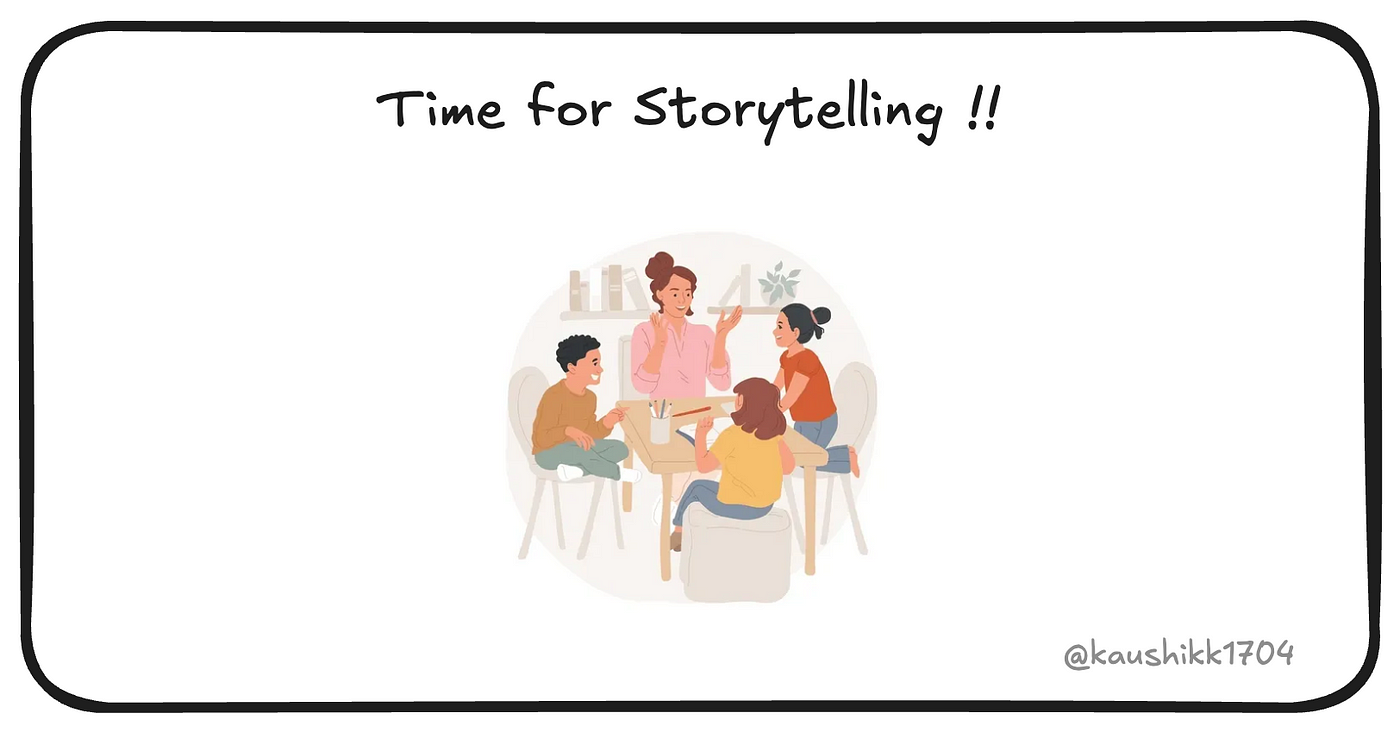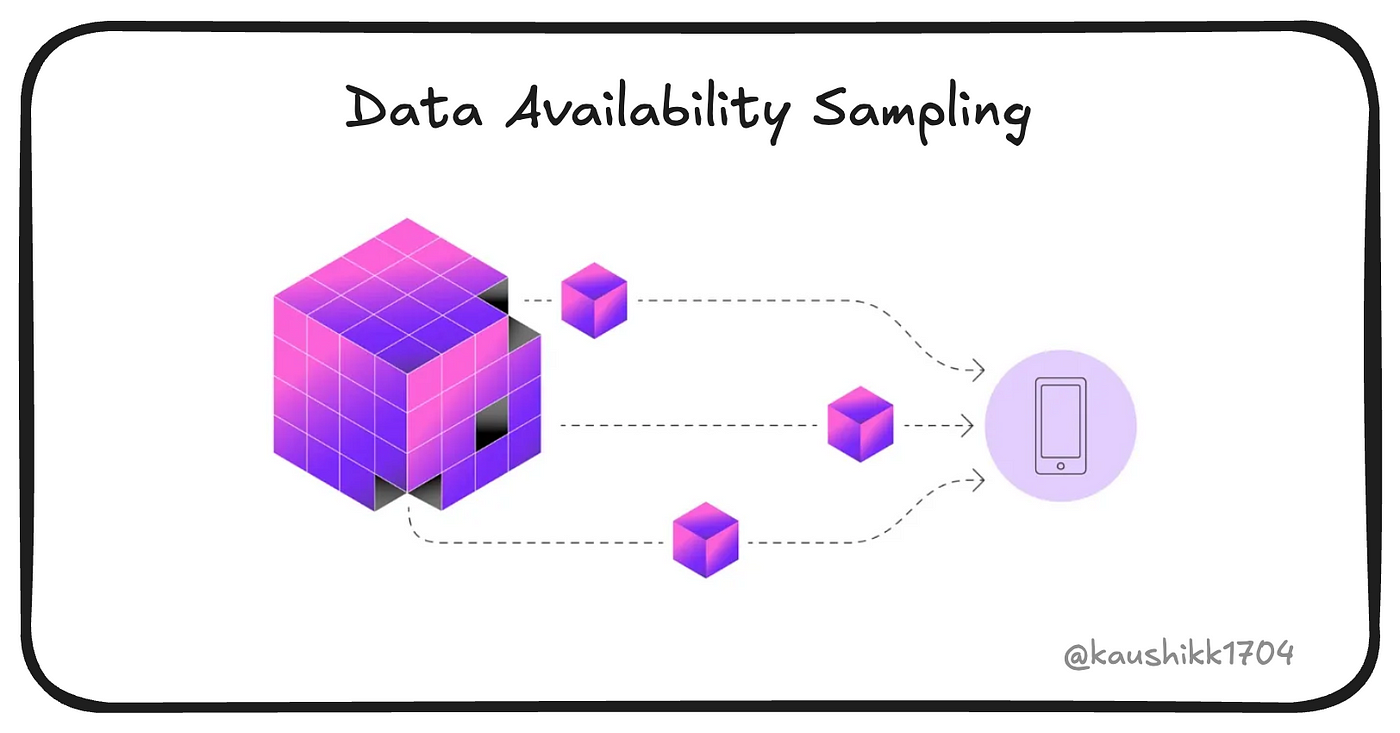How Do Blockchains Ensure All Data Is Available Without Downloading Everything? Exploring Data Availability Sampling (DAS)
 0xKaushik
0xKaushik
Have you ever wondered how blockchains can scale up without forcing everyone to download every bit of data? How can we be sure that all the necessary information is available without bogging down everyone’s devices? Or how can we prevent dishonest nodes from hiding or tampering with parts of the data without every single node needing to check every single byte?
These questions bring us to the concept of Data Availability Sampling (DAS), a crucial tool for blockchain scaling and security. DAS lets nodes confirm that all necessary data in a block is present without downloading the entire thing. But how does this magic happen? Let’s dive in and explore DAS through a fun analogy that makes the process easier to understand.

Understanding DAS Through a Story
Imagine you and your friends are contributing to a huge art mural for a community event. The mural is assembled from individual square tiles that everyone decorates, and once complete, it’s set up in a gallery with a big, locked glass case over it.
People want to verify that the mural is complete and untampered, but the gallery only allows visitors to look at it through small peepholes in the glass case. These peepholes are placed randomly, so each visitor can only see a few random sections of the mural. You’re confident that if enough people check enough peepholes and verify the tiles they see, you can be sure the entire mural is intact without anyone having to see the entire mural at once. This is the same concept used in Data Availability Sampling.
How DAS Works in Blockchain Terms
In the blockchain world, a “block” of data includes all the transactions and information for a specific time period. Traditionally, for security and verification, every node on the network would need to download and store all this data. This approach, however, becomes impractical as blockchains scale up, especially with popular Layer 2 solutions like rollups. This is where DAS shines: it allows nodes to check smaller, random sections of each block to ensure all the data is available.
Breaking It Down: The Mechanics of DAS
Random Sampling: Instead of downloading an entire block, each node samples small, random portions of the block’s data. In our mural analogy, this is like people peeking through random peepholes to see if everything looks right.
Collective Assurance: If enough nodes (or “visitors” in our analogy) check enough parts of the block and confirm that their pieces are intact, then the network collectively trusts that the block’s data is complete.
Catching Dishonest or Missing Data: What if someone tries to cheat by hiding or tampering with data? In our story, if someone removed or altered parts of the mural, random checks by enough people would likely catch this because some peeks would reveal missing or suspicious areas. Similarly, in DAS, if data is missing, nodes checking random sections will notice it, raising an alert and preventing the block from being trusted.

Another Everyday Story: Spot Checking at Work
DA’s sampling reminded me of how I used to check inventory at a previous job. We had so much stock that it was impossible to check every item. Instead, we’d do random spot checks to confirm that everything matched our records. If a few random samples were accurate, we trusted the whole inventory was in good shape.
This is essentially what DA does for rollups. It’s about verifying just enough data to trust the whole dataset. If nodes can confirm a small portion of the data, the blockchain assumes all the data is there, which allows for scalability and efficiency that I used to think wasn’t even possible in blockchain.
Why DAS is Essential for Scalable Blockchains
Blockchains need to be efficient and secure to accommodate growing transaction volumes. DAS is a game-changer because it tackles two big challenges simultaneously:
Efficiency: By allowing nodes to check only small portions of a block’s data, DAS dramatically reduces the amount of storage and computation each node needs. This means more lightweight and resource-limited devices can participate in the network.
Security with Scale: DAS maintains the network’s security even as the blockchain scales. Instead of every node needing to verify every bit of data, random sampling allows us to trust that all data is available. This lets the network expand without becoming overloaded.

Another Real-World Example: The Community Recipe Book
Consider a community where each member contributes recipes to a giant recipe book, but no one can see the entire book. Instead, randomly selected “reviewers” each receive a few pages to check for authenticity. If all reviewers report that their sections are intact and well-formatted, the community can trust the entire book without anyone seeing it all. If, however, any reviewer finds a missing or incorrect page, they’ll raise a flag, and others can check that specific area.
In DAS, every node plays the role of the reviewer, checking random parts of the “recipe book” (the data block) and collectively confirming its completeness.
The Technical Side of DAS
In blockchains, nodes use cryptographic tools to handle the random sampling efficiently. Here’s how it typically works in practice:
Data Splitting and Sampling: When a block is created, it’s split into smaller pieces. Each node in the network is responsible for checking a few random pieces.
Cross-Node Verification: Because nodes independently check random pieces, a large enough number of nodes performing these random checks can verify the full data’s availability. Even if some nodes are dishonest or malfunctioning, the majority’s consensus will ensure the data’s validity.
Error Detection and Recovery: If missing or corrupted data is found in a sample, the network can respond by either rejecting the block or requiring further checks.
The Role of DAS in Layer 2 Solutions Like Rollups
Layer 2 solutions, such as rollups, bundle transactions into batches to be processed more efficiently off the main blockchain (Layer 1). These batches are then anchored to Layer 1, maintaining security without overloading the primary chain.
DAS is essential here because it ensures data availability for these batches without requiring Layer 1 to handle all the data. By relying on DAS, Layer 2 solutions can confirm that the data they send to Layer 1 is intact, scalable, and secure without needing to process everything on-chain.

Looking Ahead: DAS for the Future of Blockchain
As blockchains continue to grow, especially with advancements in Layer 2 technologies, DAS will be a cornerstone of efficient, secure, and scalable blockchain systems. It allows blockchain networks to onboard more users and handle higher transaction volumes without compromising on security or accessibility.
Through techniques like DAS, we’re building a blockchain future that’s lighter, faster, and still as reliable as ever. This means that as blockchains continue to scale, we can be confident in their data integrity without weighing down every participant with endless storage and computational needs.
So, the next time you hear about blockchain scalability, remember DAS and the power of sampling. With a little teamwork and a lot of clever design, we’re making sure that even the largest data can be verified, one sample at a time.
Subscribe to my newsletter
Read articles from 0xKaushik directly inside your inbox. Subscribe to the newsletter, and don't miss out.
Written by
